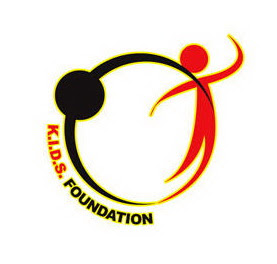With the Inayawan landfill set for full closure on Oct. 1, Cebu City officials are exploring private waste facilities as options for diverting the city’s garbage volume of 500 tons a day. The option is pricey.
Councilor Nida Cabrera said the city would have to pay P300,000 daily to use these facilities in Naga City in the south or Consolacion town in the north. Property owners there charge P700 per ton for processing garbage. “The city will pay based on the actual weight of garbage. But it’s a big problem where we will source the money,” Cabrera told Cebu Daily News.
To date, the city government has not yet set aside funds for programs that would cushion the impact of the landfill’s total closure in two months, said Cabrera. A total of 34 barangays in Cebu City north district and 27 from the south district deliver their garbage to the landfill, said Cabrera, who chairs the City Council environment committee. Most of the mountain barangays take care of their “minimal” garbage.
Mayor Michael Rama wanted to close the landfill early this year and push through with plans to convert a portion of the land into a park and a housing site for City Hall employees. But Cabrera said closing the landfill needs a lot of work. The city has to apply for a landfill closure permit from the Department of Environment and Natural Resources (DENR).
The agency will require a detailed plan on how the city intends to dispose of its garbage, as well as an onsite Materials Recovery Facility (MRF) and the landfill’s leachate pond. Cabrera said a technical expert has to guide their next steps. “This alone would already cost the city P0.5 million to P1 million. “This still does not include the cost of (garbage) diversion,” she said.
Cebu City produces 467.15 tons of garbage daily from 55 urban barangays, based on records from the landfill operations division of the Department of Public Services (DPS) said Cabrera. This means it will cost the city P327,005 per day to pay for dumping its garbage in Naga City or Consolacion town.
Cabrera said barangay Guadalupe, the city’s most populous barangay, disposes 22.16 tons of biodegradable wastes daily or P15,512 daily. Barangay Labangon tops the disposal of non-biodegradable wastes. This means P9,961 per day for 14.23 tons of wastes.
Cabrera said she has been meeting with barangay officials about their efforts on waste segregation to reduce the volume of garbage that ends up in the landfill. This includes setting up MRF stations in each barangay where recyclable items like bottles and plastic can be sorted out.
http://newsinfo.inquirer.net/37567/where-will-cebu-city-divert-its-garbage
Councilor Nida Cabrera said the city would have to pay P300,000 daily to use these facilities in Naga City in the south or Consolacion town in the north. Property owners there charge P700 per ton for processing garbage. “The city will pay based on the actual weight of garbage. But it’s a big problem where we will source the money,” Cabrera told Cebu Daily News.
To date, the city government has not yet set aside funds for programs that would cushion the impact of the landfill’s total closure in two months, said Cabrera. A total of 34 barangays in Cebu City north district and 27 from the south district deliver their garbage to the landfill, said Cabrera, who chairs the City Council environment committee. Most of the mountain barangays take care of their “minimal” garbage.
Mayor Michael Rama wanted to close the landfill early this year and push through with plans to convert a portion of the land into a park and a housing site for City Hall employees. But Cabrera said closing the landfill needs a lot of work. The city has to apply for a landfill closure permit from the Department of Environment and Natural Resources (DENR).
The agency will require a detailed plan on how the city intends to dispose of its garbage, as well as an onsite Materials Recovery Facility (MRF) and the landfill’s leachate pond. Cabrera said a technical expert has to guide their next steps. “This alone would already cost the city P0.5 million to P1 million. “This still does not include the cost of (garbage) diversion,” she said.
Cebu City produces 467.15 tons of garbage daily from 55 urban barangays, based on records from the landfill operations division of the Department of Public Services (DPS) said Cabrera. This means it will cost the city P327,005 per day to pay for dumping its garbage in Naga City or Consolacion town.
Cabrera said barangay Guadalupe, the city’s most populous barangay, disposes 22.16 tons of biodegradable wastes daily or P15,512 daily. Barangay Labangon tops the disposal of non-biodegradable wastes. This means P9,961 per day for 14.23 tons of wastes.
Cabrera said she has been meeting with barangay officials about their efforts on waste segregation to reduce the volume of garbage that ends up in the landfill. This includes setting up MRF stations in each barangay where recyclable items like bottles and plastic can be sorted out.
http://newsinfo.inquirer.net/37567/where-will-cebu-city-divert-its-garbage























































